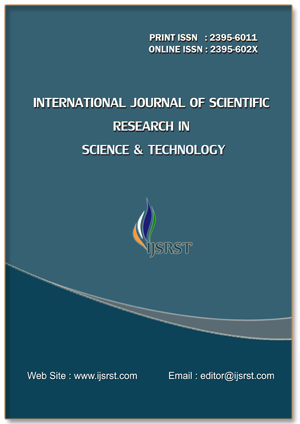Sequential Preferences of Selected Individual Characters in Simulated Forgery
DOI:
https://doi.org/10.32628/IJSRST251222670Keywords:
forensic graphology, questioned documents, simulated forgery, signature imitation, individual charactersAbstract
Questioned documents play a vital role as primary evidence in most cases. Graphology refers to the study of handwriting. Signature refers to the unique characters or symbols written by individuals over time which is impossible to be duplicated by others perfectly. Imitation of others' signatures is known as signature forgery. Simulated forgery is when a person tries to imitate a signature by seeing the original signature. In this study 450 samples were collected from 45 subjects with every 10 samples of simulated forgery and four individual characteristics namely loop, hook, cusp, and retrace were analyzed using a stereomicroscope. In this study, the result seems that the curved characters are difficult to execute by the subjects whereas the other types of characters were easily executed. This gives a chronological order, in which the individual character such as the hook goes first followed by the cusp, loop, and retrace.
📊 Article Downloads
References
Yard, F. (2022b, December 24). Questioned document examination and its History || 1932 Lindbergh case. Forensic Yard. https://forensicyard.com/questioned-document/
Forensic Handwriting and Signature Analysis. (2022, January 2). Meredith DeKalb Miller &Amp; Associates. https://dekalbmiller.com/forensic-handwriting-analysis/
Field, F., & Field, F. (2021, September 10). Class Characteristics of Handwriting – Forensic’s blog. Forensic’s Blog. https://forensicfield.blog/class-characteristics-of-handwriting/
S. (2022, June 17). Class Characteristics of Handwriting.pptx.https://www.slideshare.net/SOHAMBHATTACHARYA33/class-characteristics-of-handwritingpptx
Tarannum, A. (2018). Traced forgery-A Case Study. Academic journal of Forensic Science, 1(1)
Hilton, O. (1953). Can the forges be identified from his handwriting? Journal of Criminal Law and Criminology, 43(4)
Black, J.(1995a). Simulated Signatures: Forgery by Imitation. Journal of Forensic Identification, 45(3), 283–297.
Zhou, Y., Zheng, J., et.al, (2021). Handwritten signature verification method based on improved combined features, Applied Sciences, 11(13), 5867.
Anamika, D., Gupta, S., Kumar, S., & Kumar, S. (2023). Significant role of pen pressure in differentiating between genuine and forged handwriting & signatures. International Journal of Medical Toxicology & Legal Medicine, 26(1and2), 176–183. https://doi.org/10.5958/0974-4614.2023.00028.1
Kipouràs, P. (2022a). The evolution of the simulated signature by the forger. International Journal of Law in Changing World, 1(2), 60–72. https://doi.org/10.54934/ijlcw.v1i2.25
Downloads
Published
Issue
Section
License
Copyright (c) 2025 International Journal of Scientific Research in Science and Technology

This work is licensed under a Creative Commons Attribution 4.0 International License.
https://creativecommons.org/licenses/by/4.0




